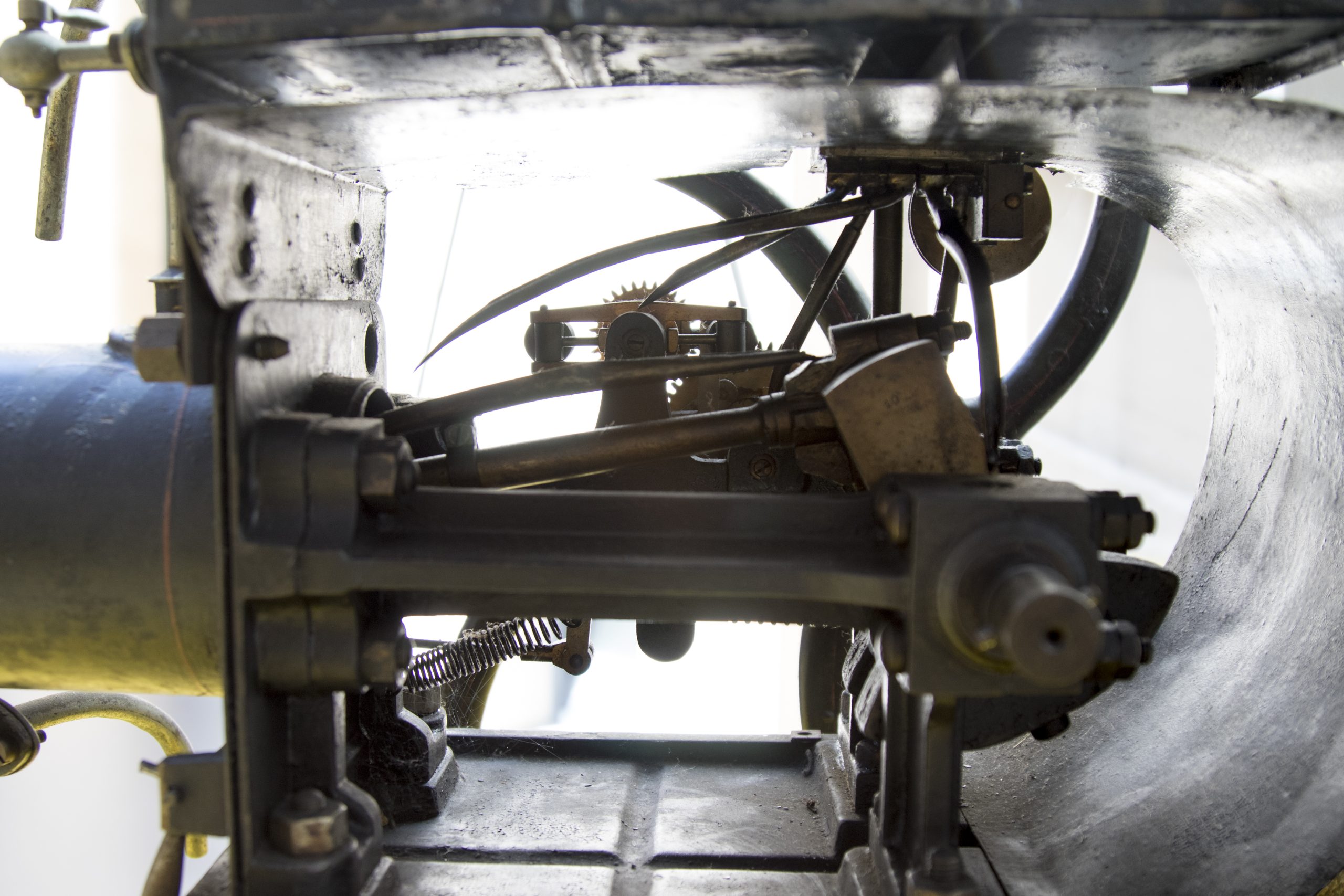The Collection
A journey through 19th-century engines and inventions that reveals the innovative research of Enrico Bernardi, pioneer of Italian motoring. Exploring the collection of the Enrico Bernardi Machine Museum means immersing yourself in the history of automobiles and engines, coming into direct contact with the vision of an inventor who understood his place in time, while leaving a lasting mark on scientific and technological progress. His creations not only anticipated subsequent technological developments but laid the foundations for a new era of motorization.
Exploring the museum’s single exhibition hall, visitors can admire engines, prototypes, and instruments designed and built by the brilliant inventor between 1878 and 1896. Each piece is a page in the history book of technological evolution.
Main pieces of the collection include
- Atmospheric gas engine (1878-1884): one of Bernardi’s first creations, with a power of 1/25 HP.
- Pia single-cylinder petrol engines (1882-1884): examples of pioneering engines, fundamental for experimentation on the internal combustion cycle.
- Pia double-acting petrol engine (1893-1896): an advanced development that highlights the creative drive and willingness to explore the potential of combustion engines.
- Lauro single-cylinder petrol engines (1887-1889): developed later, they offer improvements in power and stability of the combustion cycle.
- Motorized petrol tricycle (1893): an innovative project, with wheels in line, a prototype of the modern motor scooter.
- Three-wheeled vehicle (1894): with a maximum speed of 35 km/h and a power between 1.5 and 2.5 HP, it represents one of the first automobiles of Italian invention and construction, completed with advanced technical solutions, such as the horizontal carburettor the forced circulation cooling system and an innovative steering system that anticipates the differential.

In addition to engines and machines, the museum preserves instruments and devices designed by Bernardi to perfect his work, including:
- Tachometer (1880)
- Dynamometer: used to measure the performance of his engines.
In addition to engines and instruments, a major element of the collection is Bernardi’s archive, consisting of photographs, drawings, projects, patents, and notebooks, in which the inventor noted ideas, studies, and observations. Every detail, from the innovative carburettor to the peculiarities of the cooling system, is explored in the original documents, available in digital format through the museum’s interactive monitors, for a complete and immersive discovery experience.
